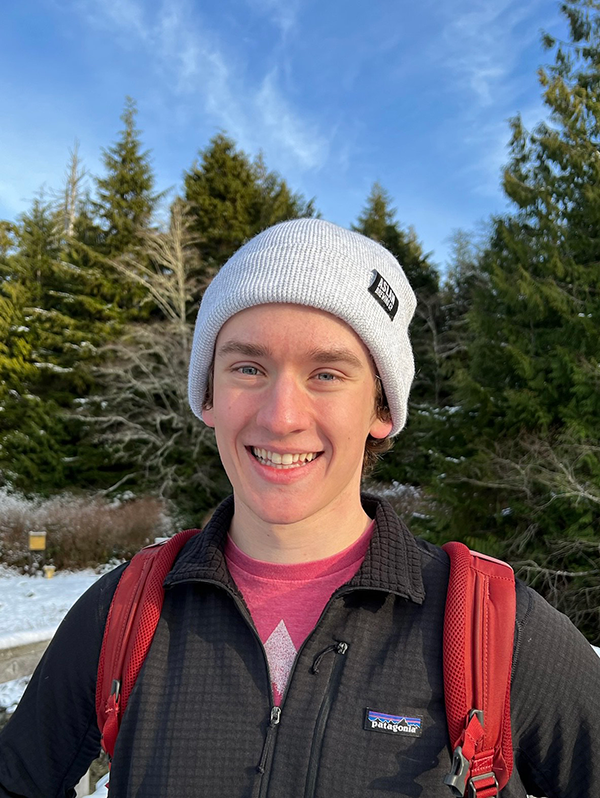
Going Beyond the Science
Senior Skyler Weight is a Physics wizz who has also loved taking humanities courses at Santa Clara University.
By Catherine Joy ’23
Senior Skyler Weight ’23 is “one of the best and strongest students in the Physics department,” according to Associate Professor Bachana Lomsadze (Physics). He has worked in Lomsadze’s research lab for the past two years, published a research paper, and is currently in the process of writing a manuscript based on results from a lab experiment that he built from scratch. However, Weight’s main advice to students, especially those considering a major in Physics, is to be okay with being confused. He elaborates, saying, “odds are, most other students are confused as well!”
Weight shared that being a Physics major can be quite difficult at times, but eventually gaining a deep understanding of the concepts can be incredibly rewarding. He expresses the importance of making sure to take a step back and consider the overarching theme of a course. “It’s easy to get so caught up in specific theorems, equations, and concepts that you lose sight of the general goal,” he explains.
While Weight spent the majority of his time at Santa Clara taking STEM classes, he explored and has an appreciation for the humanities as well. Learn about his favorite classes and professors, as well as his senior thesis in this Q&A!
Tell us about your senior thesis!
I’m writing a thesis on research I’ve been conducting at Santa Clara with Professor Bachana Lomsadze on nonlinear optics using ultrafast lasers. My thesis centers on our most recent project that we call Fourier-slice dual-comb spectroscopy. In general, spectroscopy is the study of light's interaction with matter and is very useful in determining quantum structures, as well as the chemical composition of star systems. One method is called dual-comb spectroscopy, and is fast and high resolution, but lacks important information about chemical samples. Another method, called multidimensional coherent spectroscopy, is not as fast or high resolution, but obtains a lot of information about a sample. Our research attempts to establish an experimental technique that combines the speed and resolution of dual comb spectroscopy with the information of multidimensional coherent spectroscopy, using what is called Fourier-slice theorem to do so.
Do you have a favorite professor?
While I am very appreciative of many professors (especially my research advisors Bachana Lomsadze and Cary Yang, among many others), I have to give a special nod to Betty Young of the Physics department. Ever since I walked into her office my freshman year, she has been nothing but helpful and supportive. I know this saying gets tossed around a lot, but I truly would not be where I am today without her help. In addition to being a great academic advisor, she is also an incredible researcher at the SLAC National Accelerator Laboratory and an amazing teacher in general. If any current or incoming students have not had the pleasure of meeting her (whether they decide to pursue Physics, Engineering Physics, or not), I highly recommend you find the chance to do so.
What’s your favorite class you’ve taken outside your major?
Gender and Law with Sharmila Lodhia (Women's and Gender Studies). While I have taken my fair share of scientific and technical courses at Santa Clara, I’m very appreciative of the fact that I have had the opportunity to learn about so much more than that. Coming from a family of lawyers, the law has been of great interest to me (though I do not have plans to pursue it). Professor Lodhia's approach to the history of how the law has interacted with gender in the United States was one of a kind, and I’m grateful I had the chance to learn about it from her. I recommend her as a great professor!